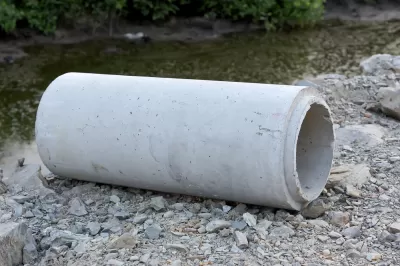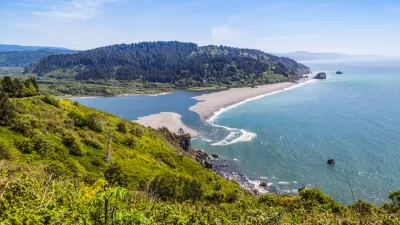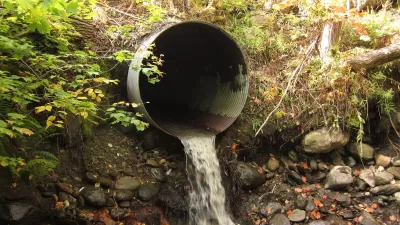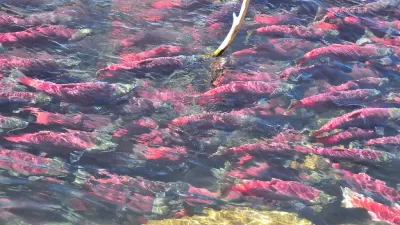Ineffective, blocked, obsolete, and in disrepair—Washington is full of culverts that pose an impediment to the survival of salmon. A court decision should have fixed the problem, but the state's budget has a long way to go to clean up the mess.

An article by KUOW takes a closer look at the engineering of culverts (i.e., the "metal pipes or concrete boxes that carry streams beneath the roadbed") in the Pacific Northwest—the source of perhaps a surprising amount of controversy after lawsuits and a historic court decision by the 9th U.S. Circuit Court of Appeals.
The article takes a tour of the Skagit River Valley in Washington with Steve Hinton, director of habitat restoration for the Swinomish Tribal Community and the Sauk-Suiattle Tribe. Examples of problematic culverts include those that are too small, "constricting the creek and making the current too fast for a fish to swim against," others that are "filled with sediment, leaving no room for fish," and some that have eroded, leaving "a lip of concrete that looks like a knife’s edge almost — a broken knife’s edge."
In total, according to the article, there are "between 30,000 and 40,000 culverts in the state of Washington that block fish as they try to get upstream." The state is responsible for 2,000 of that total.
"In his proposed budget, Washington Gov. Jay Inslee included about $700 million for culvert repair over the next 16 years," according to the article, but tribal and wildlife advocates say that's far from enough. Dean Moon, the fish passage manager for the Washington Department of Transportation, is quoted in the article saying that will correct about 170 culverts. "The state would need to repair three times that many culverts in order to give salmon access to 90 percent of the upstream habitat that’s currently blocked," adds the article.
FULL STORY: Making Sure Salmon Can Cross (Under) The Roads In Washington

Maui's Vacation Rental Debate Turns Ugly
Verbal attacks, misinformation campaigns and fistfights plague a high-stakes debate to convert thousands of vacation rentals into long-term housing.

Planetizen Federal Action Tracker
A weekly monitor of how Trump’s orders and actions are impacting planners and planning in America.

In Urban Planning, AI Prompting Could be the New Design Thinking
Creativity has long been key to great urban design. What if we see AI as our new creative partner?

King County Supportive Housing Program Offers Hope for Unhoused Residents
The county is taking a ‘Housing First’ approach that prioritizes getting people into housing, then offering wraparound supportive services.

Researchers Use AI to Get Clearer Picture of US Housing
Analysts are using artificial intelligence to supercharge their research by allowing them to comb through data faster. Though these AI tools can be error prone, they save time and housing researchers are optimistic about the future.

Making Shared Micromobility More Inclusive
Cities and shared mobility system operators can do more to include people with disabilities in planning and operations, per a new report.
Urban Design for Planners 1: Software Tools
This six-course series explores essential urban design concepts using open source software and equips planners with the tools they need to participate fully in the urban design process.
Planning for Universal Design
Learn the tools for implementing Universal Design in planning regulations.
planning NEXT
Appalachian Highlands Housing Partners
Mpact (founded as Rail~Volution)
City of Camden Redevelopment Agency
City of Astoria
City of Portland
City of Laramie





























